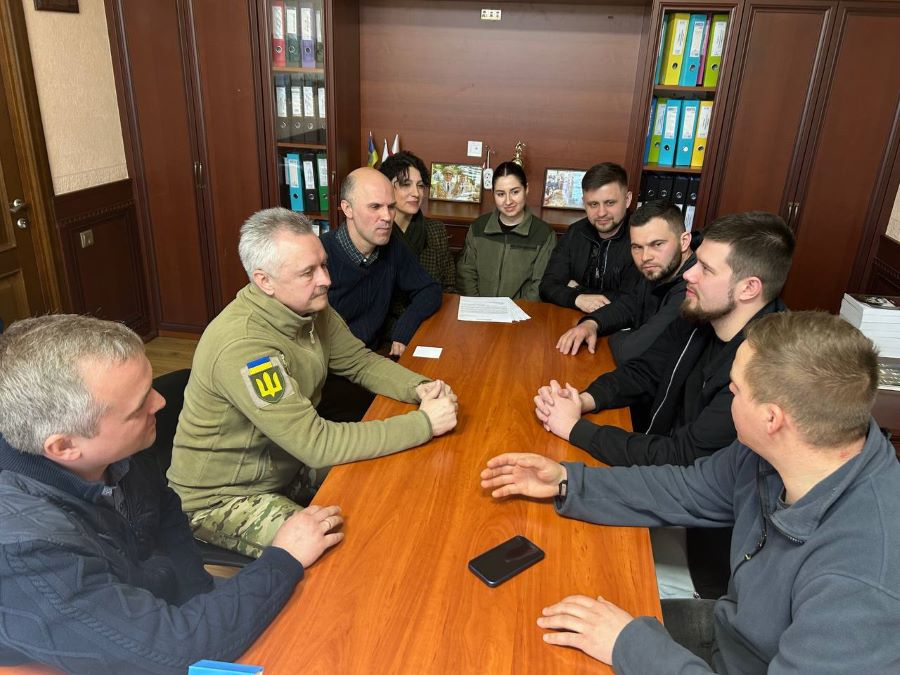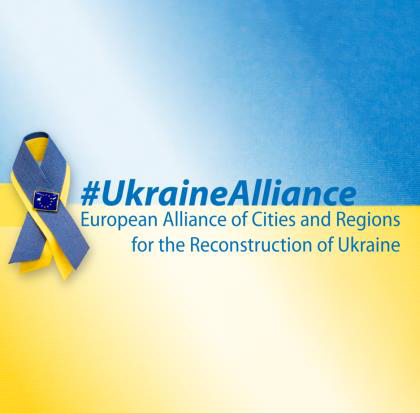By Alexei Stoyanovsky, UBC National Coordinator for Ukraine
The Ukrainian towns and cities are ready to develop building on city-to-city collaborations, including twinning relationships, as well as boosting new partnerships. This may become a central pillar in the effective reconstruction of cities.
In the beginning of April 2023, the UBC national coordinator for Ukraine has visited Hostomel city of the Kyiv neighborhood as part of a networking effort to meet with the city’s new military leadership joined by a team of local volunteers called “My vdoma” (“We are (back) home”). Possibilities for international collaboration through UBC membership were among the key topics raised.

The group of local activists became pro-active to assist in restoring life in their home town after Kyiv neighborhood have been liberated in the end of March of 2022 after a month of occupation.
The needs of the municipalities are huge, the towns were severely damaged. All parties discussed the current challenges in the process of restoring life in town and expressed their confidence that joint efforts of Ukraine and all of its’ partners will put an end to Kremlin’s invasion. Therefore, we all should be looking forward to see the region and the whole Ukraine moving on firmly in accordance with the democratic values and sustainable development principles. The new city management and the local society are determined to give no more room to corruption and therefore would be glad to join likeminded network of transparent European communities. Ukrainian municipalities are open to cooperate with the UBC and its members. For instance, Vilnyansk, which is the first Ukraine’s associated member in UBC, is looking for a partner city focused on safe environment to establish city-to-city collaboration, while Hostomel would welcome the partnership with a city that also runs an airport or the one that is a satellite city.

Hostomel, Bucha and Irpin
As part of the Kyiv offensive, the Russian forces sought control over Hostomel, Bucha and Irpin in order to encircle and besiege the Ukrainian capital city Kyiv from the west. Hostomel airfield, the site of the world’s largest cargo plane Mriya (“The Dream” in Ukrainian), has been primary target for Russian attack in the first hours into the big war. It had a strategic value for Kremlin’s military logistics to deliver assault units and heavy equipment quickly to the distance of only some 10 km away from Kyiv. The Russian Airborne Forces had failed to capture the airport at once as they had been repelled by Ukraine’s Special Forces unit later on Feb 24. Only on the next day when another air attack on the airport had been undertaken this time with the ground support of armored troops that arrived from Belarus boarder, the Ukrainian defenders retreated to continue defense from the city itself. By that time the airfield had already been damaged and unable to serve as logistics facility for Kremlin troops any more. That is how the battle for Kyiv had turned into the battle for Hostomel, Bucha and Irpin instead.

Due to the intensity of the Kyiv offensive, the Kyiv Oblast State Administration named Hostomel, along with Irpin, Bucha, Highway M06, and Vyshhorod as the most dangerous places in the Kyiv Oblast. A swift operation to overthrow the Ukrainian government failed as the invading troops had encountered fierce resistance and numerous courageous counter-offensives. The Russian units, however, have committed mass atrocities against the civilian population during that time. Hundreds of civilian residents were reported being killed, tortured and found murdered. The symbol of these events so far is Bucha where some of the victims were buried in mass graves.
More information:
Alexei Stoyanovsky
bioexpert@ukr.net


